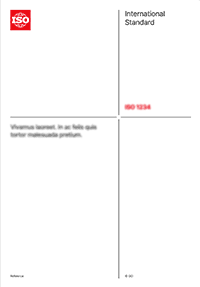Résumé
This International Standard sets out the basic methods for sampling copper, lead, zinc and nickel intermediates and residues, including stopped belt sampling, to provide samples for chemical analysis, physical testing and determination of moisture content in accordance with the relevant International Standards. Examples of smelter intermediates and residues include granulated slags, anode slimes and dusts. Sampling of cathodes, anodes, bullion, ingots and dross is not covered in this International Standard. Where the smelter intermediates and residues are susceptible to significant oxidation or decomposition, it is necessary to use a common sample for moisture determination and chemical analysis to eliminate bias (see ISO10252). In such cases, the common sample must be sufficiently representative, i.e. unbiased and sufficiently precise, for chemical analysis and determination of moisture content. Stopped-belt sampling is the reference method for collecting intermediate and residue samples against which mechanical and manual sampling procedures may be compared. Sampling from moving streams is the preferred method. Both falling-stream and cross-belt samplers are described. Sampling from stationary lots is used only where sampling from moving streams is not possible, eg, sampling of smelter intermediates and residues in bags and drums. The procedures described in this International Standard for sampling from stationary are designed to minimize some of the systematic sampling errors that may arise when sampling stationary lots.
Informations générales
-
État actuel: ProjetStade: Nouveau projet enregistré au programme de travail du TC/SC [20.00]
-
Edition: 1
-
Comité technique :ISO/TC 183
- RSS mises à jour


